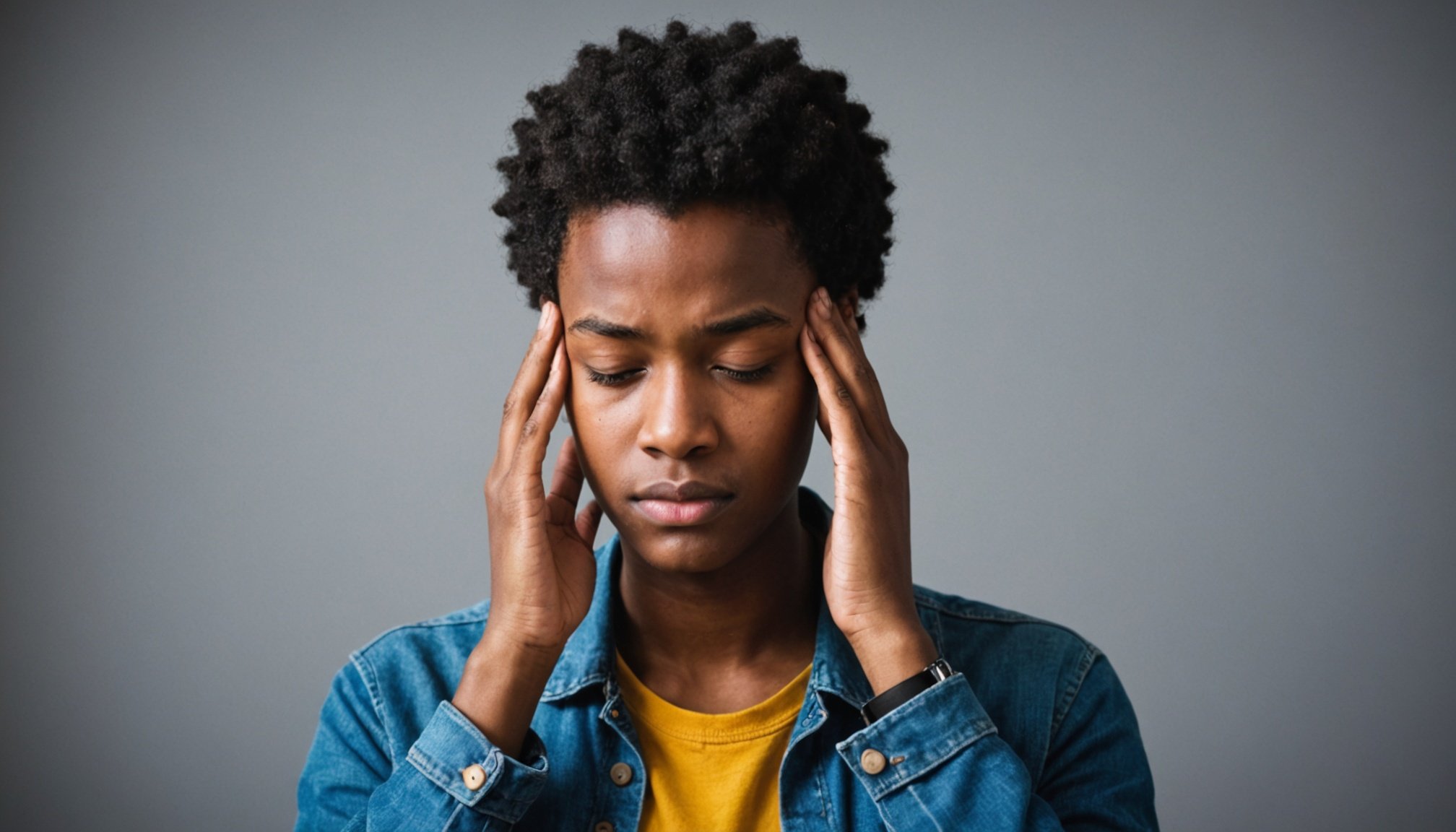Understanding Chronic Migraines in Teens
Chronic migraines, affecting many teenagers, are severe headaches that occur at least 15 days a month over a three-month period. This condition significantly impacts teen health, leading to disrupted schoolwork and social activities due to intense migraine symptoms. These symptoms often manifest as throbbing pain, nausea, and sensitivity to light and sound.
Teenagers are particularly prone to chronic migraines due to various triggers. Common triggers include stress from academic pressures, irregular sleep patterns, and dietary habits. Hormonal changes during adolescence also contribute to the frequency and intensity of migraine symptoms. Recognising these triggers is essential for managing and reducing the occurrence of migraines.
Additional reading : Top Strategies for Effectively Managing Epilepsy in Children: Essential Best Practices
The psychological impact of chronic migraines on teenagers cannot be understated. Frequent migraine episodes may lead to anxiety, depression, and a decline in self-esteem. This is due to the consistent interruption of daily life, making it difficult for teens to participate in normal activities. Addressing the psychological effects is equally important as treating physical symptoms, as comprehensive care improves overall well-being.
Preventative measures and lifestyle adjustments, such as maintaining a consistent sleep schedule and managing stress, can help alleviate some of the burden of chronic migraines in teens. Such measures aim to improve the quality of life and long-term health outcomes for those affected.
Also to read : Exploring the Benefits of Telehealth for Delivering Mental Health Services to Rural Communities
Evidence-Based Prevention Strategies
Preventing migraines, especially for teens involved in wellness activities, can be achieved through various lifestyle changes. The journey to reducing migraine frequency begins with establishing regular sleep patterns. Consistent sleep schedules can considerably mitigate migraine occurrences by maintaining a stable circadian rhythm. Likewise, staying well-hydrated is essential as dehydration is a common trigger for headaches.
Dietary modifications also play a crucial role in preventing migraines. Identifying and avoiding food triggers, such as caffeine, chocolate, and processed foods, can lead to noticeable relief. Opting for meals rich in magnesium, such as leafy greens and nuts, supports brain health and reduces headache frequency.
Physical exercise and regular activity are beneficial beyond overall health; they are pivotal in migraine prevention. Engaging in moderate, routine physical activities like brisk walking or swimming helps reduce stress, a key migraine trigger, and promotes the release of endorphins, the body’s natural painkillers.
For teens, balancing school, social life, and physical wellness can be challenging. However, adopting these evidence-based strategies not only aids in reducing migraines but also contributes heavily to overall teen wellness. Recognising these factors and implementing them effectively encourages a proactive approach to health management.
Managing Symptoms During a Migraine Attack
Navigating the throes of a migraine can be daunting, but effective migraine management strategies exist for immediate relief. A well-crafted migraine action plan is paramount, offering a targeted method to cope when an attack strikes. This plan may include over-the-counter treatments like ibuprofen or acetaminophen, combined with prescription options such as triptans to mitigate intense symptoms.
Addressing light and sound sensitivity is crucial. Simple coping strategies can include using earplugs or noise-cancelling headphones to reduce sound-related discomfort and wearing sunglasses or using blackout curtains to manage extreme light sensitivity. By incorporating these techniques, sufferers can create a calming environment conducive to relief.
Implementing a migraine action plan designed specifically for your needs can offer a comforting structure. Consider having a dedicated kit at hand, filled with medications, ice packs, and relaxation tools, which can be indispensable during an attack. This preparatory step fosters a sense of control amidst the unpredictability of migraines.
In addition, keeping track of potential triggers and symptoms can enable more effective dialogue with healthcare providers, tailoring prescription options for optimal results. By prioritising tailored techniques, individuals can maintain a semblance of normalcy and better contend with migraine occurrences.
Emotional Support and Coping Mechanisms
Navigating emotional well-being during adolescence can be challenging. Emotional support from family and peers plays a crucial role in maintaining mental health. Parents and friends who offer understanding, patience, and a listening ear can significantly improve a teen’s emotional outlook. This support fosters a safe space for young people to express themselves without fear of judgment, promoting positive coping strategies.
Teen coping strategies are varied and can include mindfulness and relaxation techniques. Mindfulness exercises, such as focused breathing and guided imagery, can reduce anxiety and foster a sense of calm. Relaxation techniques might also involve activities like yoga or meditation, which are accessible and can be integrated into daily routines to support emotional balance.
Another effective approach is journaling, which allows teens to process their thoughts and emotions on paper. Journaling can serve not only as a tool for self-reflection but also for tracking patterns in mental health, such as migraines, which are often linked to stress. By identifying triggers through journaling, teens gain insights that can lead to better management and potentially reduce the occurrence of these painful episodes.
Implementing these coping strategies can empower teens to take an active role in their emotional well-being, leading to more resilient mental health.
Guidance for Parents Supporting Their Teens
Supporting a teenager with chronic migraines can be challenging, but understanding the problem is the first step to providing effective parental support. Chronic migraines can significantly affect a teen’s daily life, impacting their academic performance and social interactions. It is essential for parents to engage in migraine education to comprehend the severity and implications of these headaches. By acquiring in-depth knowledge, parents can more effectively advocate for their teens.
Open and honest communication is crucial. Encourage your teen to articulate their experiences and needs, as this empowers them and gives insight into their condition. Developing communication strategies can greatly aid in ensuring that teens feel heard and supported.
Parents should seek out and utilize available resources to better manage teen health. Medical professionals can offer tailored advice and treatment plans, while support groups provide a community of families facing similar challenges. Connecting with these resources not only enhances teen health management but also helps you, as a parent, feel less isolated and better equipped.
Remember, your involvement and awareness can make a significant difference in your teen’s life, helping them navigate their condition with confidence and resilience.
Potential Treatment Options
When addressing migraines, especially in youths, considering various migraine treatments is crucial. Medical interventions often play a pivotal role. Commonly, teens might be prescribed medications like over-the-counter pain relievers, triptans specifically designed for migraines, or in some cases, preventive medications. It’s important to monitor usage closely, as effectiveness can differ significantly from one individual to another.
Beyond traditional methods, youth healthcare practitioners might recommend exploring alternative therapies. These include practices such as acupuncture, biofeedback, and stress management techniques. While there is optimism surrounding these solutions, the evidence supporting their efficacy varies.
A holistic approach is also worth noting, which might involve dietary adjustments, regular exercise, and ensuring adequate sleep. These lifestyle changes can sometimes mitigate migraine frequency and severity.
To be most effective, working closely with healthcare professionals is essential. They can craft personalized treatment plans reflecting the unique needs of the individual. These tailored strategies consider the patient’s specific medical history, lifestyle, and even psychological factors, ensuring that the chosen treatments align with their overall wellbeing. Always consult professionals before making changes to a migraine management plan, especially when considering new or unproven treatments.











